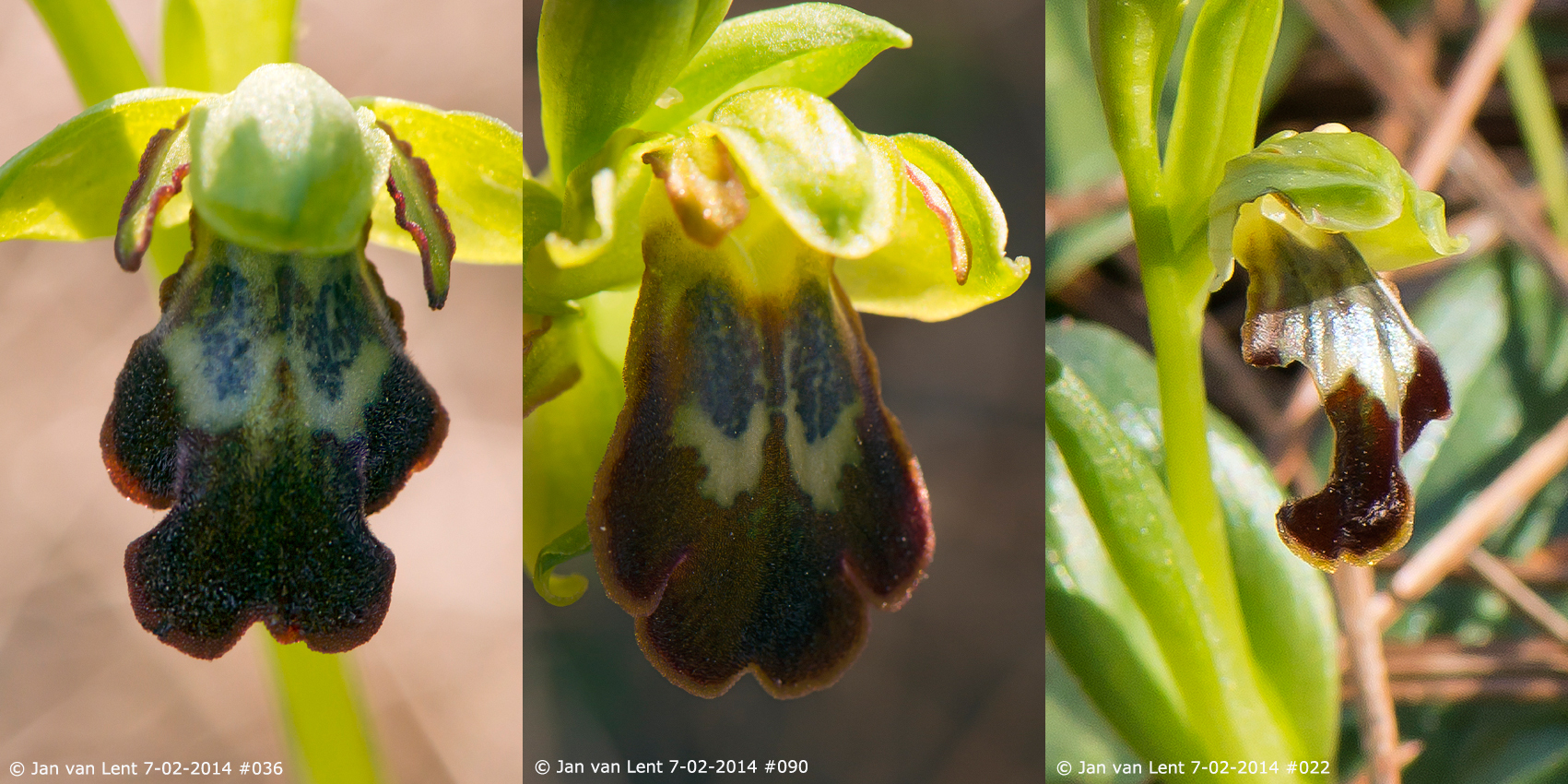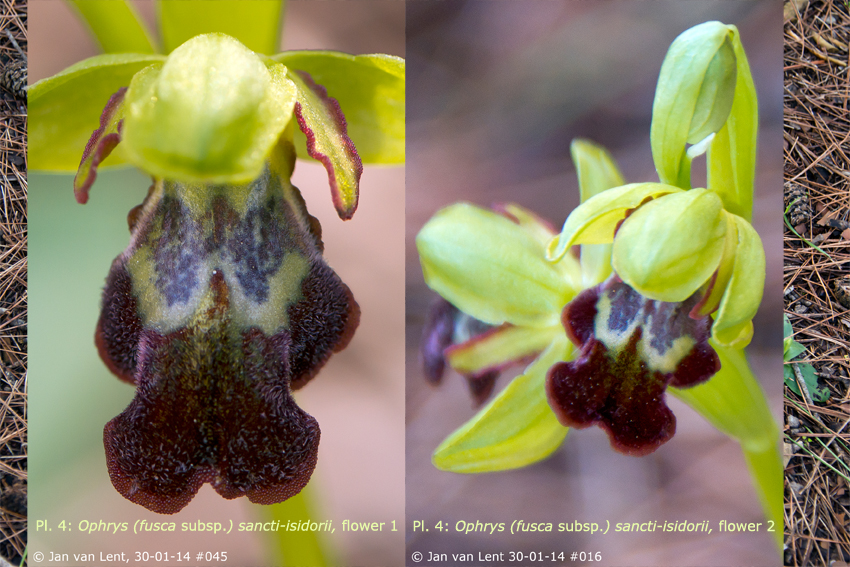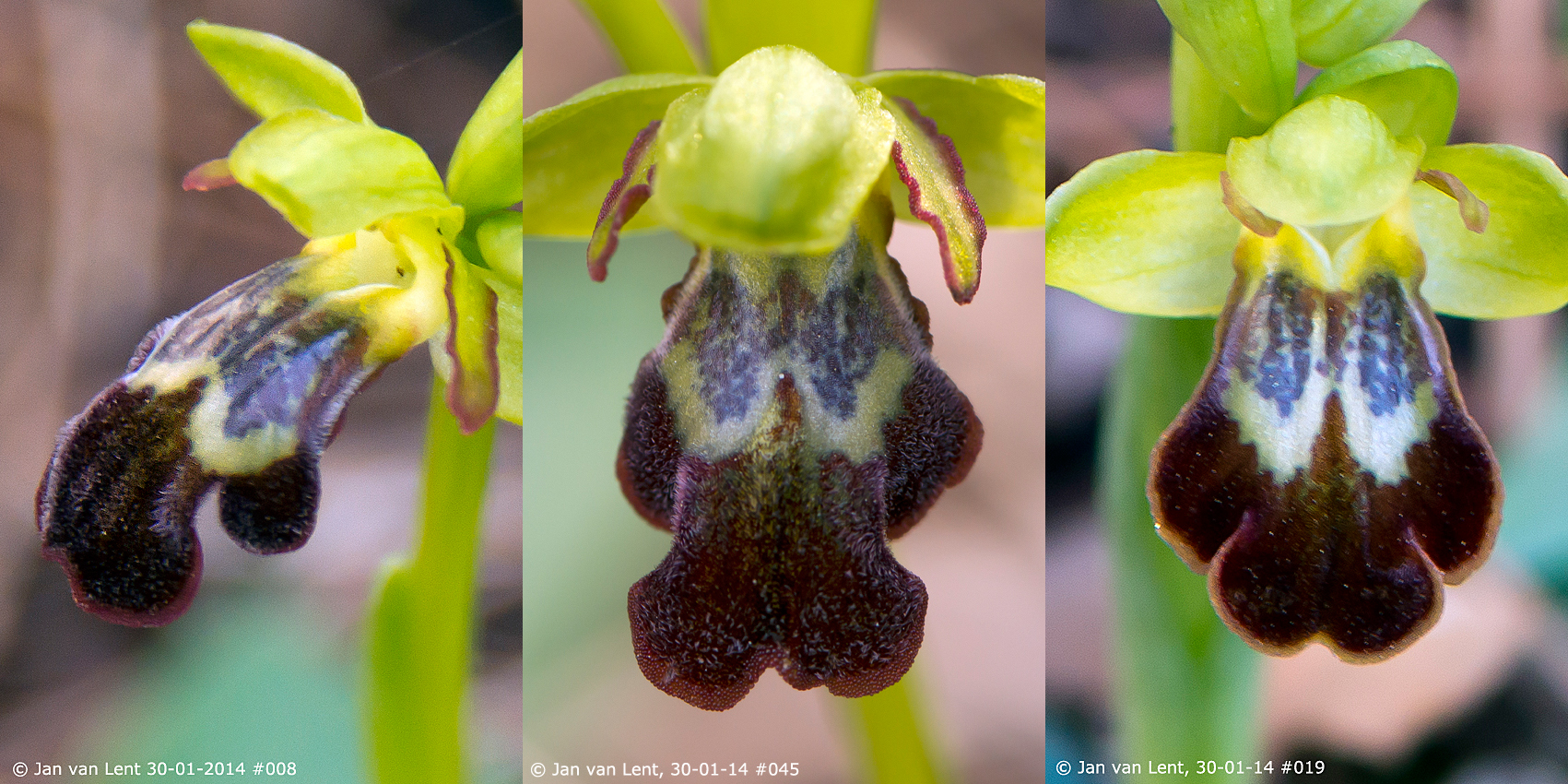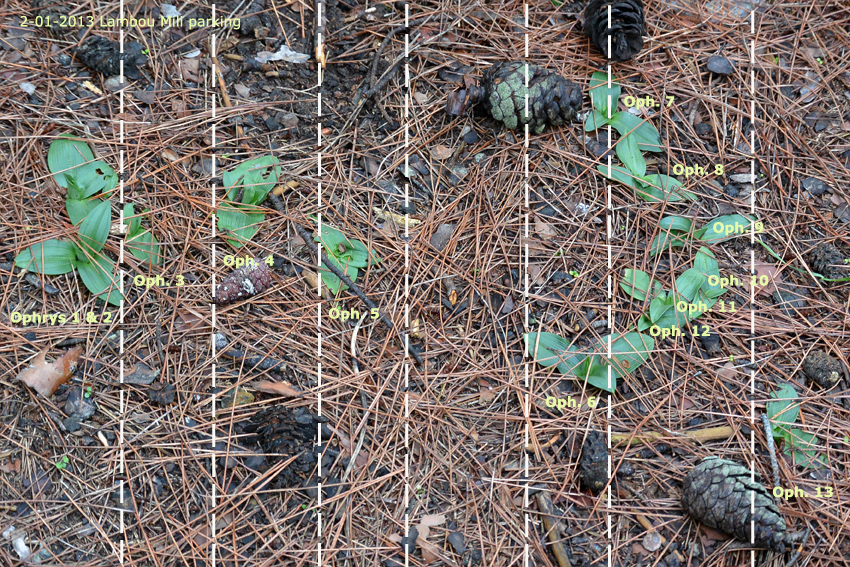Habitat: Lambou Mili parking place, altitude 185m. Young pine woods.
Ophrys fusca group, Lambou Mili parking place, © Jan van Lent, 7-2-14 #001
The Ophrys fusca subsp. fusca group on this habitat:
23-01-2014: Ophrys (fusca subsp.) sancti-isidorii A. & P. SALIARIS & ALIBERTIS 2010,
30-01-2014: Ophrys (fusca subsp.) sancti-isidorii A. & P. SALIARIS & ALIBERTIS 2010,
Ophrys (fusca subsp.) phaseliana (D. & U. RÜCKBRODT 1996), KREUTZ. 06-02-2013: Ophrys (fusca subsp.) sancti-isidorii A. & P. SALIARIS & ALIBERTIS 2010
07-02-2014: Ophrys (fusca subsp.) sancti-isidorii A. & P. SALIARIS & ALIBERTIS 2010, Ophrys (fusca subsp.) phaseliana (D. & U. RÜCKBRODT 1996), KREUTZ.
Plant 1 (left) Oph. sancti-isidorii, Lambou Mili parking place, © Jan van Lent, 7-2-14 #016
CONTINUATION from blog 30 & 31: The story of an ‘ordinary’ Ophrys fusca group, somewhere next to a parking spot in aLesvos pine forest along the ‘highway’ to Mytilini in the neighbourhood of Lambou Mili. Last week 3 plants were in flower (Ophrys 1: 2 flowers, Ophrys 4: 2 flowers & Ophrys 6: 1 flower).
Ophrys phaseliana, Lambou Mili parking place, © Jan van Lent, 7-2-14 #044
PART 3: 7-02-2014. This week, again one week later – and no rain this second week of February and with late spring temperatures – I went to this parking space to see if everything was still fine with ‘my’ Ophrys fusca-group. They were okay; plants 1 & 4 (Ophrys sancti-isidorii) were still flowering, although no 4 (also Ophrys sancti-isidorii) had lost the second flower (at the back), plant 6 was still flowering but not with the same flower as one week ago, that one was broken off, but fortunately a new flower was already there. Plant 10 also had a flower – had – because it was already half eaten by insects. I couldn’t identify it, but the lip had a narrow yellow border so hopefully next time those insects or animals go somewhere else for their lunch…
Plant 4: O. sancti-isidorii #036, Plant 6: O.phaseliana #090, Plant 10: Oph. #022, 7-2-2014
And for the first time I can compare with the photographs I took last year at this habitat:
6-02-2013: On the 6th of February 2013 I started – that year- with my research of this fusca-group. At that time only plant 1 (left – Oph. sancti-isidorii) had 1 flower, plant 2 (left) was almost flowering, plant 4 (left) had flowered but was now already ‘empty’, eaten by insects I suppose (and that was the reason I went earlier this year to this habitat). Plant 6 (Ophrys phaseliana) was also almost flowering. So today I can only compare plant 1, Ophrys sancti-isidorii from 7-02-2014 with the one from 6-02-2013.
Oph. fusca group, Lambou Mili parking place, © Jan van Lent, 7-2-14 #008 & 6-2-13 #037
pl1: 2013 #019 (left) – 2014 flower1 #086 & 2#032 (right), © Jan van Lent 7-2-14.
pl1: 2013 #025 (left) – 2014 flower1 #016 & 2#15 (right), © Jan van Lent 7-2-14.
BOTTOM-LINE: So no shocking changes today, but if you compare plant 1 Ophrys sancti-isidorii from both years with each other you see that flower no 1 looks almost the same as last year but flower 2 has a bluer coloured speculum and a darker, almost black lip. This year the lips of both flowers are longer – 16.9mm in 2014 against 14.8mm in 2013 – and more bent down. Last year the lip was still almost flat, and a little bit turned up at the end of the lip. Today the flowers looked like very big Ophrys sitiaca… but that is not possible, is it? But ‘Everything is possible in Greece’ as the Greeks like to say, so we will probably find that out in the next episode of ‘sooner or later’…
Jan van Lent, 21-02-2014 Eftalou, Lesvos.
Cyndi Lauper: ‘True Colours’
https://www.youtube.com/watch?v=LPn0KFlbqX8



















